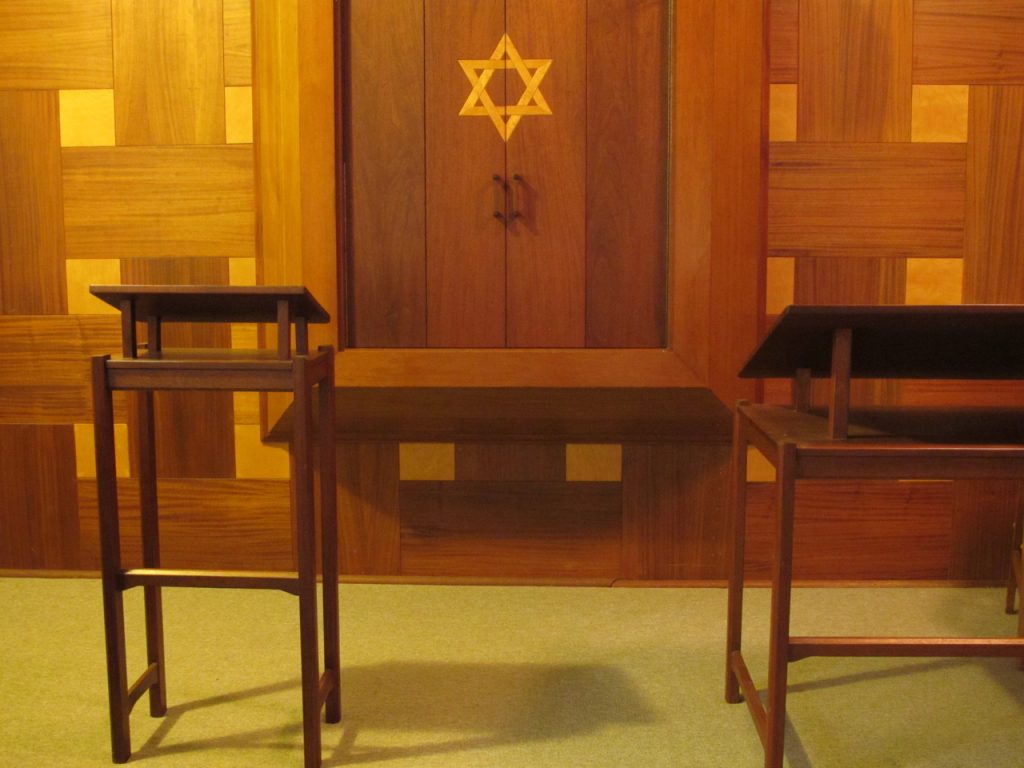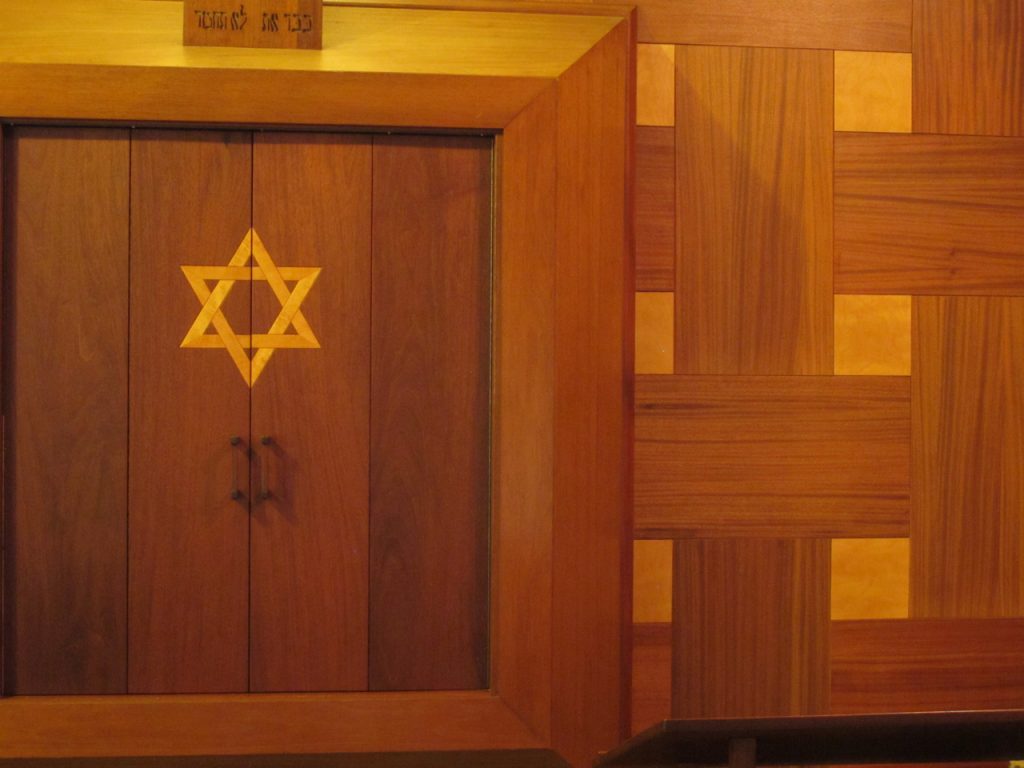We may receive a commission when you use our affiliate links. However, this does not impact our recommendations.

Here are the three objects I made for the Hillel Foundation.
Forty years ago, in 1979, I was hired by the local University Hillel Foundation to make doors for the torah arc, a lectern, and a four-foot wide table for reading a rolled-out torah. You may notice the design influence of James Krenov, who I think has had a greater impact on the Renaissance in modern woodworking than any other single person. Tage Frid would probably rank second, which is interesting because both men were trained in Scandinavia, Sweden and Denmark respectively.
Anyway, a few weeks ago I went back to Hillel to take a few pictures because I had noticed that the mahogany I had used had darkened and no longer matched the color of the mahogany on the background wall.

To better show the problem, I took a second picture to counteract the over-bright left side.
Except for the color change, all three objects looked exactly the same as the day I delivered them. I felt very proud of myself. For anything to last for forty years in an institution with countless people moving things around, and who knows what kind of humidity conditions, would make any woodworker proud.
I made all three objects out of solid Honduras mahogany and solid hard maple inlay. And I matched the color of the background mahogany perfectly. I had read that I should use a chemical stain rather than a dye or pigment stain because chemical stains don’t change color. Using a chemical stain that would react with the mahogany and not with the maple was also a good way to keep the maple its natural color. So I used potassium dichromate. But I didn’t take into account that the mahogany itself, under the stain and finish, might change color. This is what has happened. Exposed to light, the mahogany darkened.
There is nothing that I know of to prevent this from happening. So there isn’t any lesson here, other than being aware that this happens.
Here are some supplies and tools we find essential in our everyday work around the shop. We may receive a commission from sales referred by our links; however, we have carefully selected these products for their usefulness and quality.








